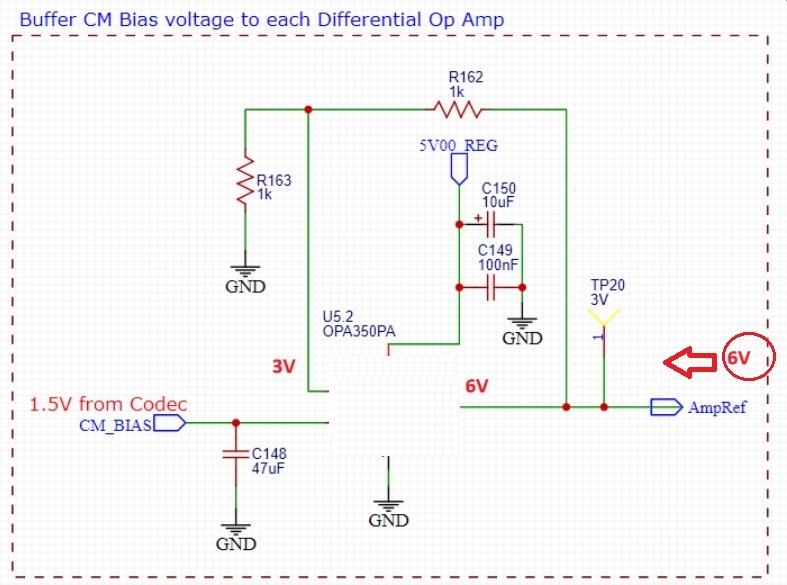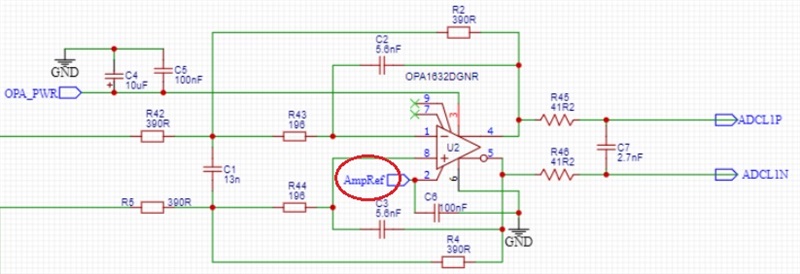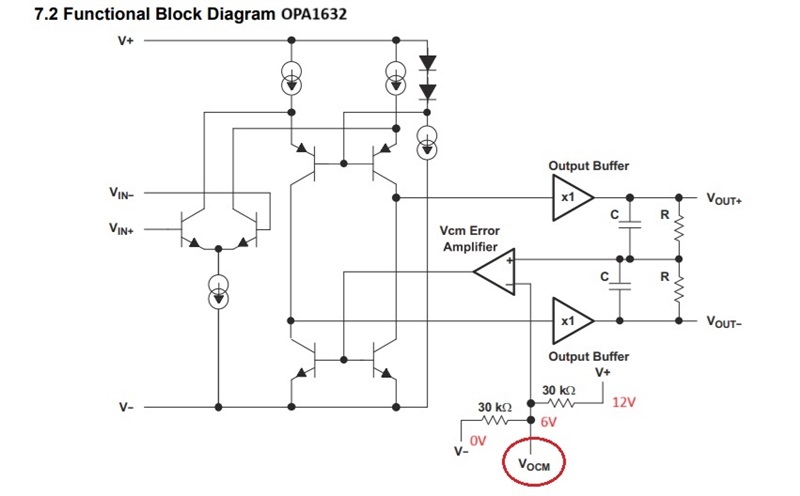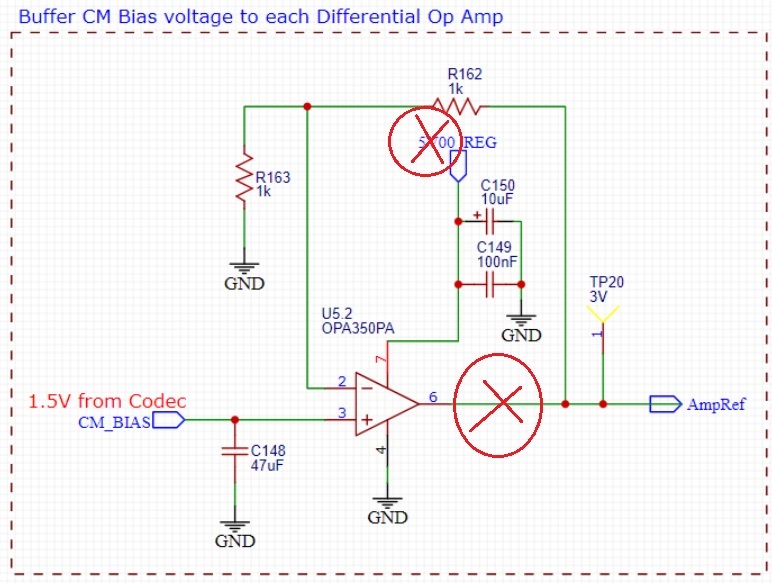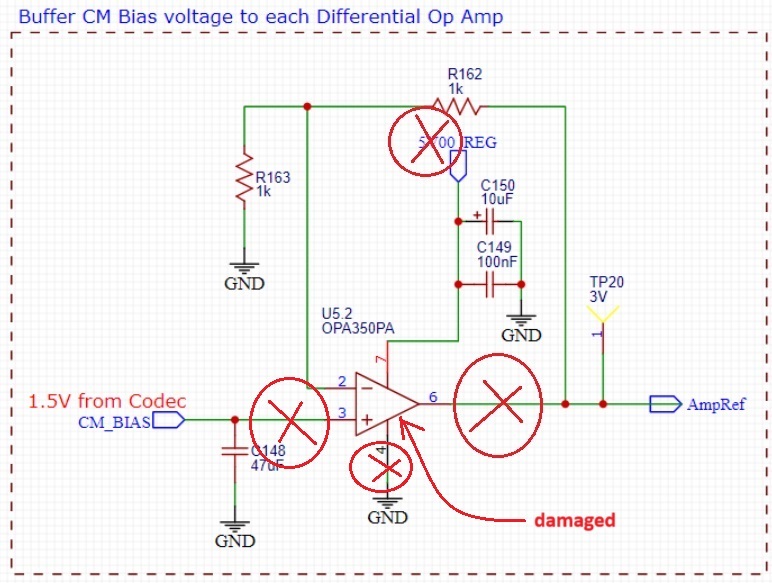Other Parts Discussed in Thread: OPA1632
Tool/software:
Hi again, Marek Lis and Art Kay. I am finally back on to trying to debug this board with the OPA350. See original thread you were helping me on "Measured output is double simulated (expected) output level".
As requested, I have removed the OPA350 and I measure 6V DC on TP20 (which should be ~ 3V DC).
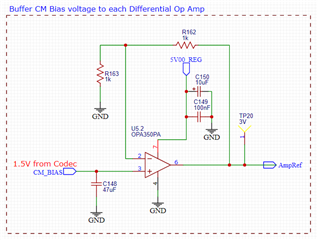
For completeness:
OPA350 voltage readings at each pin:
pin 2: 3.0 V
pin 3: 1.5 V
Pin 4: 0.0 V
Pin 6: 6.0 V
Pin 7: 4.9 V
Other test point voltages:
TP3: 12V
TP5: 3.2 V
TP10: 0 V
TP19: 3.2 V
TP18: 4.9 V
Voltages on OPA1632 pins:
pin1: 6.1 V
Pin2: 6.1 V
pin3: 12 V
pin4: 6.1 V
pin5: 6.1 V
pin6: 0 V
pin7 12 V
pin8: 6.1 V
pin 7 is supposed to be not connected (refer below schematic)
And other parts of the power supply portion of my schematic, and repeating the path to my APO1632's:
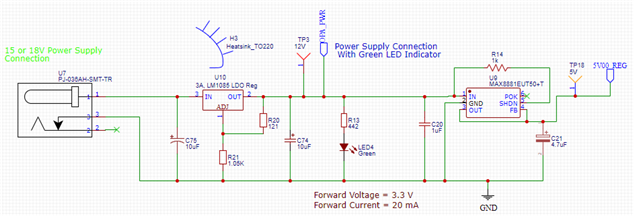
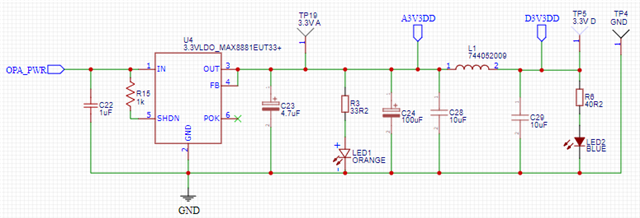
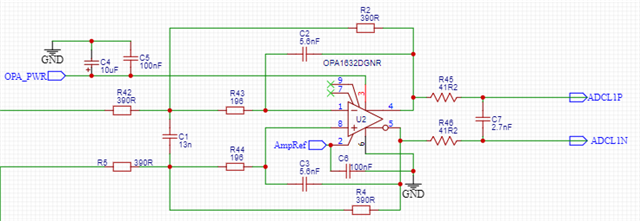
demonstrating pin 7 of OPA1632 on PCB layer
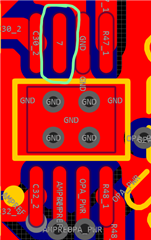
Any tips on how I can narrow down this problem with the above supplied information now? Many thanks!
Mark



